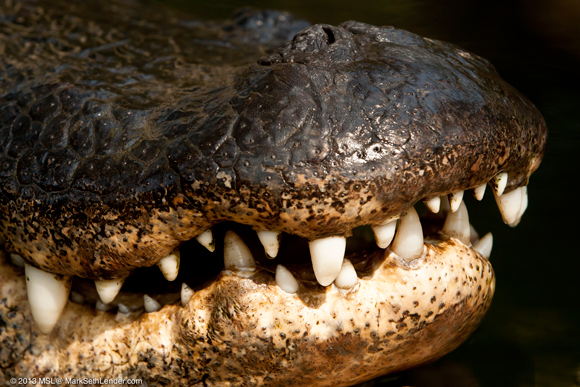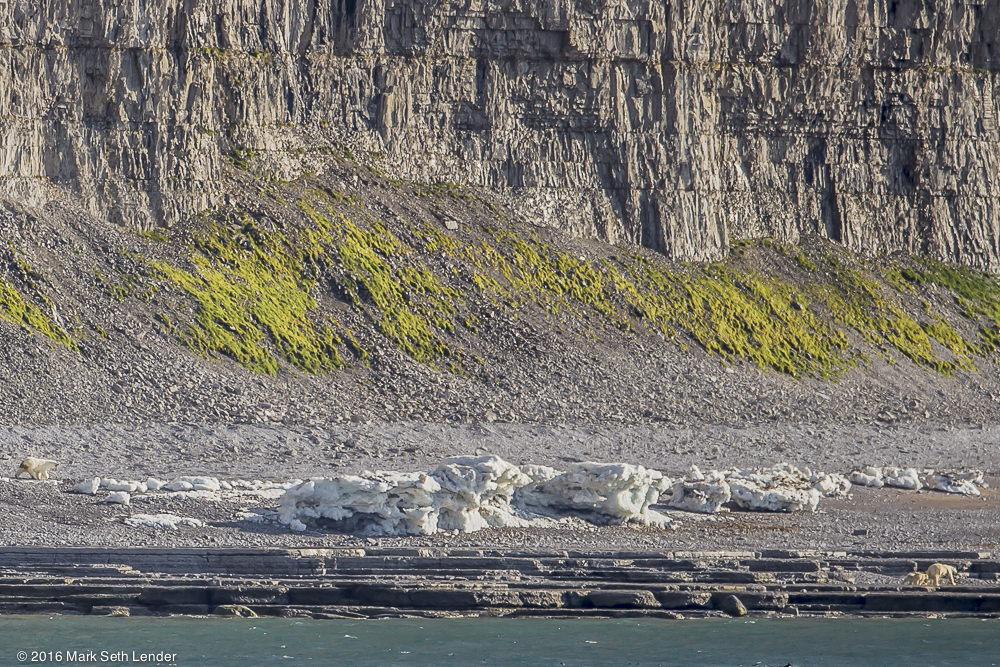 Two Cubs-of-the-Year scrambling after their Mother
Two Cubs-of-the-Year scrambling after their Mother
Tag Archives: Wildlife
Bellows

Bellows
© 2013 Mark Seth Lender
All Rights Reserved
Spring clings to the Spanish moss. Comes up from the swamp in sheaves of mist. It brings the nesting herons home. And raises the blood in an ancient’s bones.
Big
Bull
Alligators.
Breaking out.
Wake up from the wintery mud where they sleep alone. Slide into that swamp they call their own. They stretch, halfway out of the water and expand their throats like over-stuffed pockets. And all around that water starts to dance. Like spit on a griddle. Like ants in your pants. Like boiling oil. It doesn’t have a choice – the bigger the gator the deeper the voice.
But down where the dancing starts it’s only silence humans can hear. I know. I’ve ducked my head below where a person ought not to go, and listened: The only thing that greets your ears is the scrape and the rake of alligator toes. Only another gator knows what all that dancing means…
She hears (what you can only see) and moves on over to the Alligator of Her Dreams.
Ignited by her cold-blooded heat he burns, and bellows all the more. Her emotions bulletproof, close to the vest, but when all is said and done she leans her head upon the leather-studded back above his massive chest. Completely still. You can barely see her breathe, or him.
Possession is a two-way street when all the lovers are armed to the teeth!

Possession
Field Note
The St. Augustine Alligator Farm and Zoological Park at 100 years of age has a name too old to change even though, nothing Prada, no Gucci boots find their origins here. They never did. There is instead a large and well cared for collection of rare reptiles and a gem of a swamp, the only one left in the entire area. Not only alligators abound but hundreds and hundreds of nesting egrets, herons, storks and even roseate spoonbills. That swamp is their moat, and the gators are the posted guards. Nest robbers read them like a neon sign:
KEEP OUT!
Trespassers will be eaten!

While true it is also too much the Hollywood version. In the movies. On TV. And consequently in our nightmare dreams. We think we know Al the Gator but we don’t. His hunger portrayed as ravenous is only occasional. His temperament quite variable. This I say from personal experience.
You can turn your back on the gator St. Augustine’s calls Bob. Sipowitz? Not so much. And both of them know their names. Each will slowly swing his head around and look at you if you call to them. And after a while, you will see clearly that each face is unique and identifiable. Which leads to the presumption that the alligators also recognize and distinguish their individual selves and quite likely us one from the other.
Alligators keep a military order. The penalty for Little Gator eating what Gig Gator believes to be his can a crushed head. Likewise the snowy egret who ventures incautiously close to water ends badly. Yet Alligators, male and female, cold blooded though they be, have a tender heart. Once they choose each other they are loyal and gentle. This in their own terms. Not like us. And not so different as we might have thought.
If you plan to visit St. Augustine bring a camera. A telephoto lens (between at least 300 MM up to 500 MM) plus a good medium zoom like the Canon 70-200 would be the ideal combination. However, the birds are close enough – and the gators big enough – that consumer cameras are sufficient for most people. Spring is an exceptionally good time for birders as the plumages are spectacular, the behavior rich, and baby birds loud and plentiful. Not to mention, the gators will be bellowing.
Sound Bites
Here’s what bellowing alligators sound like, up close and personal:
Alligators BELLOWING (MONO – Short #3
Mark Seth Lender reading Bellows on Living on Earth(PRI)
Alligator Gallery











